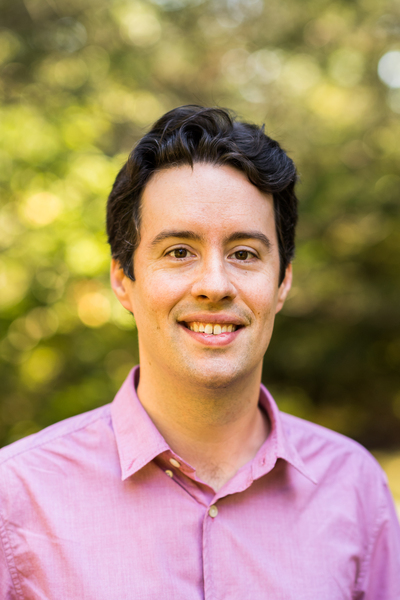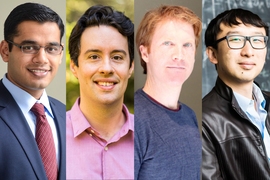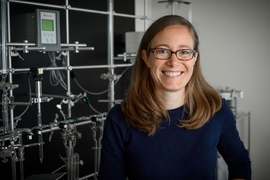The David and Lucile Packard Foundation has announced that Daniel Harlow, assistant professor of physics and a researcher at the MIT Center for Theoretical Physics, has been named a Packard Fellow for Science and Engineering. The Packard Foundation Fellowships are one of the most prestigious and well-funded non-governmental awards for early-career scientists.
Each year, the foundation invites 50 university presidents to nominate two early-career professors each from their institutions; from those 100 nominees, an advisory panel of distinguished scientists and engineers select the fellows, who receive individual grants of $875,000 over five years. The 2020 class comprises 20 fellows.
“Daniel Harlow has emerged as a leader in formal field theory and continues MIT’s great tradition in formal theory," says Peter Fisher, professor and head of MIT’s Department of Physics.
Harlow researches black holes by combining quantum mechanics and Einstein's general relativity. The Packard Foundation recognized Harlow’s use of ideas from quantum computation to generate new insights about both black holes and quantum computers.
“Understanding the quantum properties of black holes has been one of the great challenges in physics for the last five decades, and in recent years we have learned that it is closely related to many other interesting problems,” says Harlow. “In particular there is an ongoing interplay with the theories of condensed matter systems and quantum computers. It is my hope that with this fellowship my group and I will be able to make progress on all of these fronts, helping to create a new kind of physics where the old boundaries between subfields are forgotten and any interesting problem is fair game.”
Harlow is a co-discoverer of a close connection between the anti-de Sitter/conformal field theory (AdS/CFT) correspondence, a relationship between certain theories of quantum gravity and quantum field theories, and the theory of quantum error correcting codes. With Kavli Institute for the Physics and Mathematics of the Universe and Caltech scientist Hirosi Ooguri, he also recently developed a new understanding of symmetry in particle physics and gravity, with which they were able to prove that no global symmetry can exist on the gravity side of the AdS/CFT correspondence.
Harlow was a postdoc at Princeton and Harvard universities before joining MIT in July 2017. He earned a doctorate in physics from Stanford University in 2012, and received his bachelor’s degree in physics and mathematics from Columbia University in 2006.
Harlow was awarded the 2019 New Horizons in Physics Prize "for fundamental insights about quantum information, quantum field theory, and gravity,” and is a member of the Simons Foundation’s "It from Qubit" Collaboration on Quantum Fields, Gravity, and Information.
“I am thrilled to be receiving a Packard Fellowship!” says Harlow. “It is a great honor to be entrusted with this responsibility, and I hope I will be able to live up to the high standards of my predecessors.”
Past Packard fellows have gone on to receive such honors as the Nobel Prize in chemistry and physics, the Fields Medal, the Alan T. Waterman Award, MacArthur Fellowships, and elections to the National Academies.











